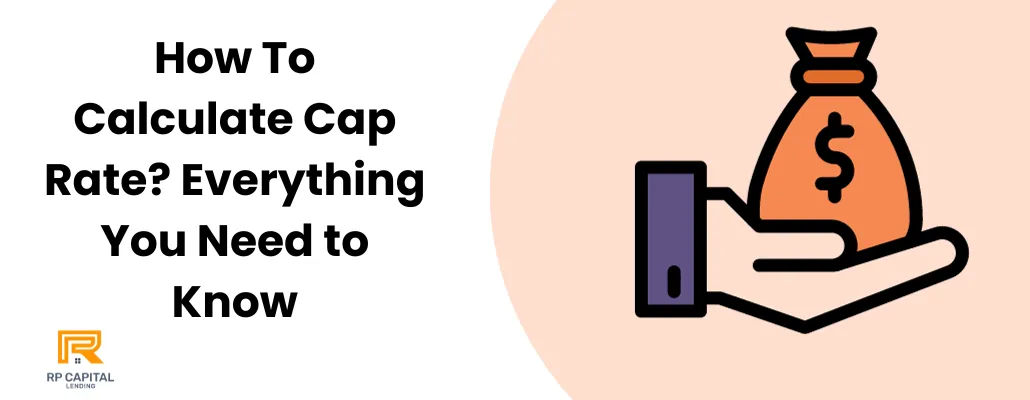Blog

How To Calculate Cap Rate?
In the world of real estate investing, understanding how to calculate the Capitalization Rate, commonly referred to as the Cap Rate, is essential. The Cap Rate is a critical financial metric that allows investors to evaluate the profitability and potential return on investment of a property. Whether you are a seasoned investor or just starting your real estate journey, this guide will walk you through the intricacies of calculating Cap Rate and help you make informed investment decisions.
What Is Cap Rate?
Before delving into the calculation process, let's begin by defining Cap Rate. The Capitalization Rate, or Cap Rate, is a fundamental metric used in the real estate industry to assess the potential return on an investment property. It is expressed as a percentage and represents the ratio of a property's net operating income (NOI) to its current market value or acquisition cost. In simpler terms, Cap Rate provides an estimate of how quickly an investor can recoup their initial investment through the property's income.
The Formula: Cap Rate Calculation
To calculate the Cap Rate, you will need to know two primary components:
Net Operating Income (NOI)
Net Operating Income is the total income generated by a property after deducting all the operating expenses. These expenses typically include property management fees, taxes, insurance, and maintenance costs. The formula for calculating NOI is:
NOI = Total Income - Operating Expenses
Property Value or Acquisition Cost
The property value or acquisition cost represents the current market value of the property or the cost at which you acquired it.
Once you have these two values, you can use the following formula to calculate the Cap Rate:
Cap Rate = (NOI / Property Value) x 100
Why Is Cap Rate Important?
Understanding Cap Rate is vital for several reasons:
Risk Assessment: A higher Cap Rate generally indicates a potentially higher return on investment. However, it can also signify higher risk or lower property quality.
Comparative Analysis: Cap Rate allows you to compare different properties or investment opportunities to determine which one offers the best potential return.
Market Insights: Cap Rates can provide insights into the local real estate market. Lower Cap Rates may suggest a competitive market, while higher Cap Rates may indicate opportunities for value investing.
Financial Planning: Cap Rate is a valuable tool for financial planning, helping investors make informed decisions about their real estate portfolio.
Factors Affecting Cap Rate
Cap Rate is not a static metric and can be influenced by several factors, including:
Location
Properties in different locations can have significantly different Cap Rates. Urban properties tend to have lower Cap Rates due to higher demand, while rural properties may offer higher Cap Rates.
Property Type
The type of property you invest in, whether it's residential, commercial, or industrial, can impact the Cap Rate. Commercial properties often have higher Cap Rates due to increased income potential.
Property Condition
The overall condition of a property can affect the Cap Rate. Well-maintained properties are likely to have higher Cap Rates.
Market Conditions
Cap Rates can fluctuate with changes in the real estate market. Economic conditions, demand, and supply can all impact the Cap Rate.
Using Cap Rate for Investment Decisions
When it comes to real estate investments, Cap Rate is a valuable tool for assessing potential returns and risks. Here's how you can use Cap Rate for making informed investment decisions:
1. Comparative Analysis: Calculate the Cap Rates of multiple properties you are considering. This will help you identify the most attractive investment opportunities.
2. Risk Assessment: Consider your risk tolerance and investment goals. Higher Cap Rates may offer more significant returns but may come with higher risk.
3. Local Market Knowledge: Research the local real estate market to understand the factors influencing Cap Rates in your target area.
4. Long-Term Goals: Evaluate whether the investment aligns with your long-term financial goals. Cap Rate is just one factor in your investment strategy.
Real-Life Example
Let's break down the calculation with a real-life example. Suppose you have a rental property with a yearly NOI of $30,000, and the property's current market value is $400,000. To calculate the Cap Rate:
Cap Rate = ($30,000 / $400,000) x 100 = 7.5%
In this case, the Cap Rate is 7.5%, indicating the potential annual return on your investment.
Conclusion
The Cap Rate is a powerful tool for real estate investors to assess the potential return on investment and make informed decisions. By understanding how to calculate Cap Rate and considering the factors that influence it, you can navigate the real estate market with confidence.
FAQs
1. Is a higher Cap Rate always better for investors?
No, not necessarily. While a higher Cap Rate may suggest a potentially higher return, it can also indicate higher risk. It's crucial to consider your investment goals and risk tolerance when evaluating properties.
2. What is a good Cap Rate for a rental property?
A "good" Cap Rate can vary depending on your investment strategy and the local market. It's essential to compare Cap Rates in the context of your specific goals and the area you are considering.
3. Can Cap Rate change over time?
Yes, Cap Rates can change due to various factors, including market conditions, property improvements, and rental income fluctuations.
4. Should I rely solely on Cap Rate when making investment decisions?
While Cap Rate is a valuable metric, it should be used in conjunction with other factors, such as location, property condition, and your long-term investment goals, to make informed decisions.
5. Are there online tools available to help calculate Cap Rate?
Yes, there are many online calculators and resources that can assist you in calculating the Cap Rate of a property. These tools can streamline the process and provide accurate results.
Disclaimer: Loans only apply to non-owner occupied properties. Rates, terms and conditions offered only to qualified borrowers, may vary upon loan product, deal structure, other applicable considerations, and are subject to change at any time without notice.
Copyright © 2025. All Rights Reserved.


